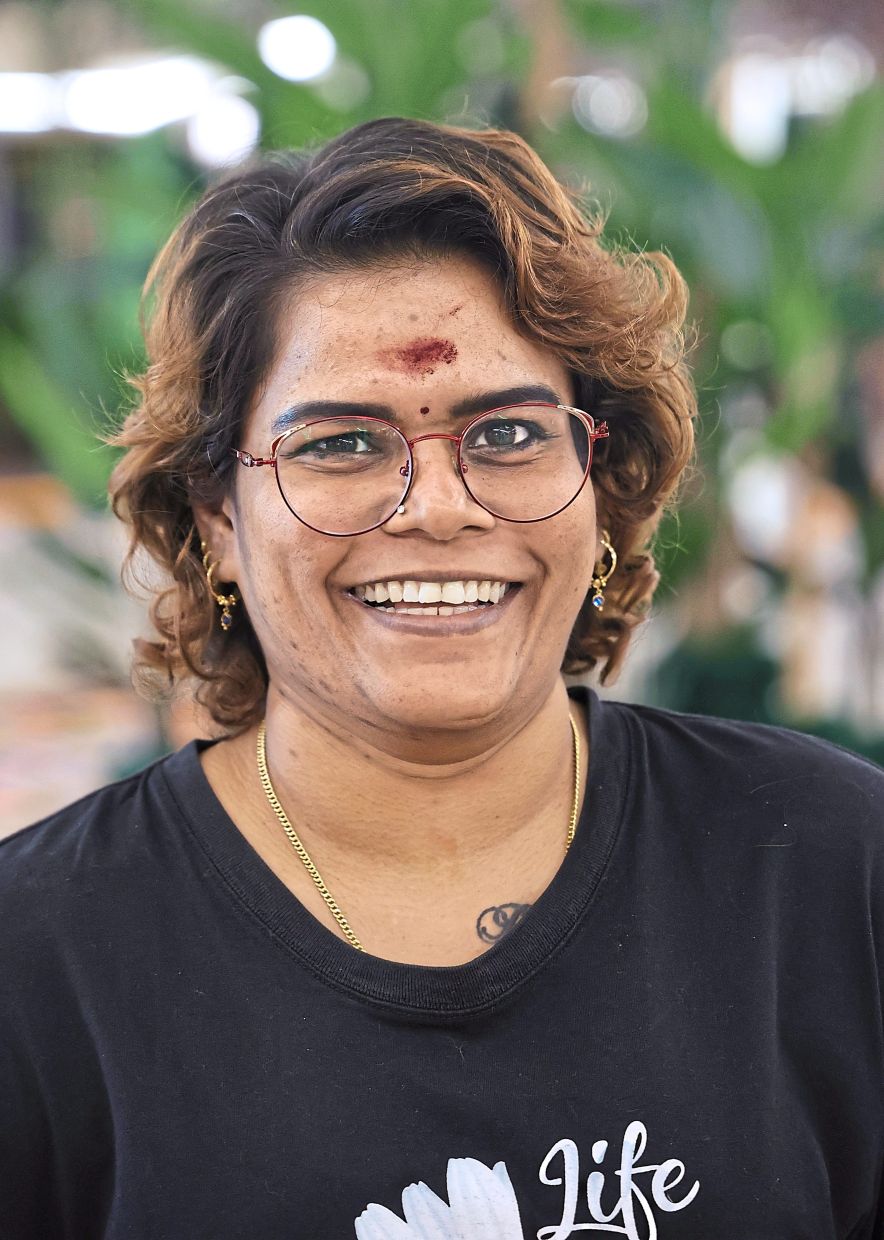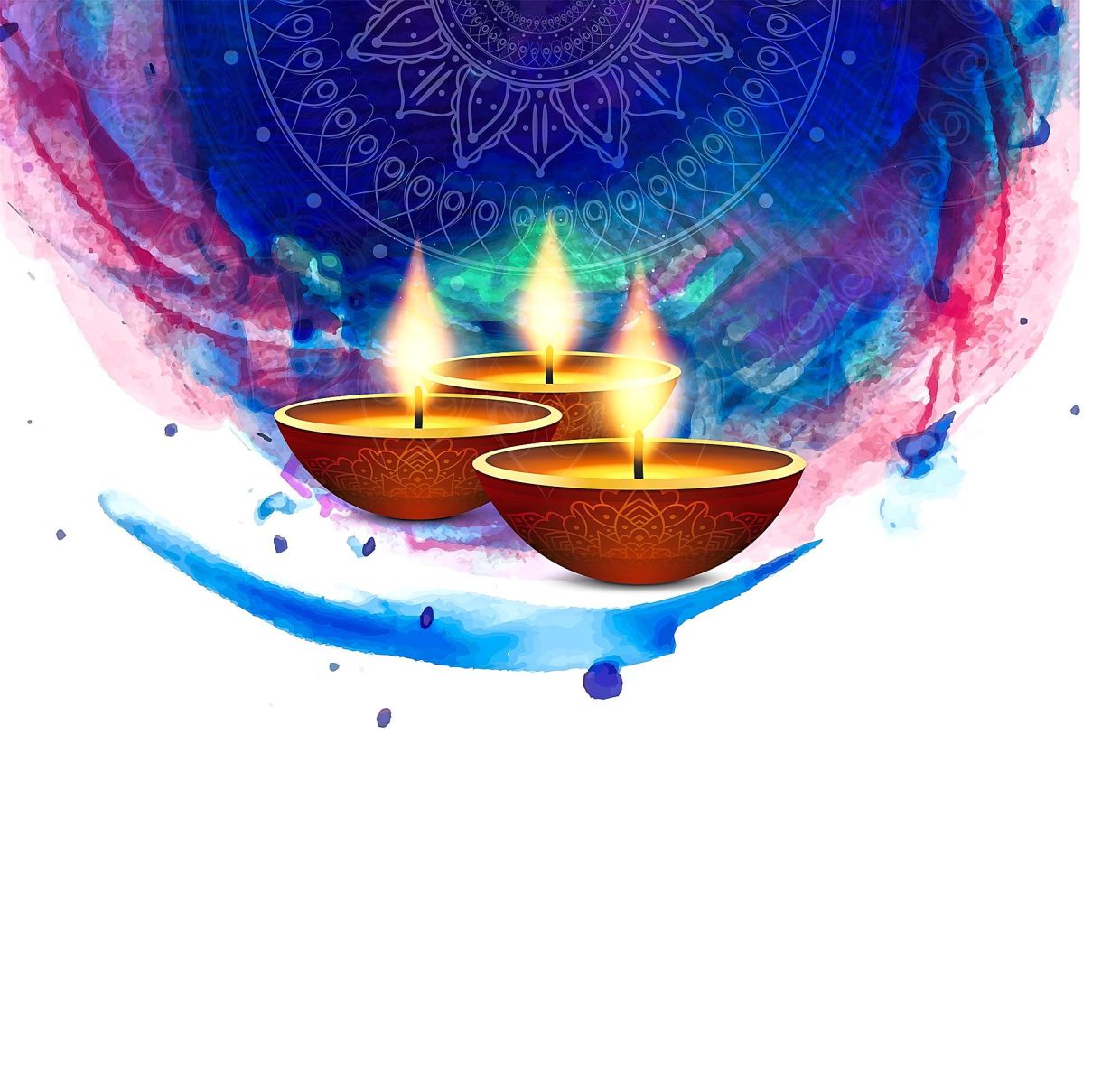‘Each kolam is more than just a design. It is an invitation to welcome guests and celebrate Deepavali,’ says Ruben. Photos: The Star/Kamarul Ariffin
With Deepavali just around the corner, Ruben Prakash, 38, has been caught up in a whirlwind of activity. As a kolam artist in Kuala Lumpur, he has spent the past few weeks decorating countless Hindu homes and shopping malls with vibrant kolams.
“This month, I’ve completed about 50 commissioned kolams and still have another 50 to finish by Deepavali on Oct 31. On Deepavali day, I will start to work on kolam decorations in my customers’ homes from 6am. I usually aim to complete a 4sq ft (0.37sq m) kolam in about 15-30 minutes.
“Though it’s hard work, there’s nothing more rewarding than seeing these colourful designs bring homes to life for the festival,” he adds as he puts the final touches on a kolam at the Sri Muthu Mariamman Temple in Pantai Dalam, Kuala Lumpur.
Kolam, or rangoli, is a traditional Indian art form where intricate patterns are drawn on the ground, typically at the entrance of homes. Made using rice flour, rice grains and semolina with coloured powders or food dyes, kolams are created to welcome guests and deities, symbolising prosperity, harmony and positive energy.
“Usually it is a family tradition to decorate the porch during religious festivals like Navaratri (a Hindu festival that spans nine nights) and Deepavali. During the festival of lights, the kolam serves as an invitation, welcoming guests into our home, especially Goddess Lakshmi, the Hindu goddess of wealth and prosperity,” says Ruben, who has been a kolam artist for close to 20 years.
Deepavali is observed by Hindus, Jains, Sikhs and some Buddhists, and is incorporated into many different cultures globally. During this celebration, which originates from India, Hindus light many diyas (lamps) around their homes to represent the victory of good over evil.
Ruben’s kolam designs are deeply rooted in Indian culture and include the lotus, peacock, traditional Indian musical instruments like the tabla and veena, and classical dances like kathak and bharatanatyam.
He has also replicated intricate saree designs in his kolam, where he showcases the richness of Indian heritage.
His biggest kolam measured 73.1m at Gateway at Kuala Lumpur International Airport 2 in Sepang, Selangor.
Ruben is passionate about promoting and preserving Indian cultural heritage through his kolam designs.
“It’s challenging to create intricate kolam designs, but I am confident I can do it. There’s so much richness in our heritage that deserves to be showcased, and I want to bring that to life through my art.”
For Ruben, keeping traditions alive is an essential part of his Deepavali celebration.
“In India, kolam is done daily, but here in Malaysia, it’s mostly during festivals. We use ‘pulli kolam’ (kolam design with dots) where dots of rice flour are arranged in a grid and connected to form symmetrical shapes.
“The rice flour serves a purpose too – it feeds small insects, pets and birds. Regular practice helps me master the technique, turning it into an art form,” says Ruben, who runs an events management company in Puchong, Selangor.
Artistic touch
Ruben’s interest in kolam began during his formative years at the Pure Life Society (PLS), a home for disadvantaged children in Jalan Puchong, Kuala Lumpur.
“When I was 15, an artist from India visited our centre and taught us basic kolam patterns, including how to mix colours and create designs. That experience ignited my love for this art form,” recalls Ruben, who stayed at PLS from age nine till 25.
Participating in school competitions further fuelled his enthusiasm for kolam, as he discovered a passion for colours and creativity.
“At PLS, I was always tasked with creating kolam designs during religious functions.
“That helped solidify my interest in kolam,” shares Ruben, who holds a Bachelor of Design in Professional Design (Visual Communication) from Limkokwing University of Creative Technology in Cyberjaya, Selangor.
He eventually went on to open an events management company in Puchong, Selangor, and one of the services offered was kolam artwork. In the last two decades, he’s created thousands of kolam artwork across Malaysia, and showcased his works in Singapore, Australia and Indonesia. Besides kolams for Deepavali, Ruben also designs them for open houses, Merdeka celebrations and weddings.
He believes that creating kolam is not particularly difficult, but demands a blend of skill, patience and a genuine passion for art.
“Making kolam takes patience. There are many video tutorials on social media platforms that teach viewers the step-by-step methods on kolam-making. And of course, you need some creativity to get it right,” says the friendly father of one with a warm smile.
At his warehouse in Bandar Metro Puchong, Ruben has over 50 gunny sacks filled with broken rice in colours that include yellow, pink, orange, purple, green and blue.
Each sack weighs about 50kg, with the colours carefully mixed using food-grade dye.
Ruben explains that mixing the colours and ensuring they dry properly is crucial.
“Each colour in the kolam design requires careful toning. Colours are mixed to create a vibrant gradient of tones. On a hot day, it takes just an hour for the coloured rice grains to dry, but during the rainy season, it can take up to a day. If the grains do not dry properly, they can develop fungus or mould, leading to unpleasant smells,” says Ruben, who began planning his kolam designs in July.
He draws the kolam designs freehand, using colour pencils to add in vibrant hues. For larger kolams, he scans the drawings and prints them onto large paper sheets.
Several weeks after his projects have been displayed, he collects the rice, washes it and donates it to animal shelters in Sepang and Ulu Kelang, Selangor.
“Some people think using rice for kolam is wasteful, but we ensure it doesn’t go to waste. The rice is dyed with food colouring, making it safe for animals. We repurpose the rice for a good cause,” says Ruben, who shares his creations on his Instagram.
Empowering the community
Working on 100 kolams in a month is no easy task, but Ruben is fortunate to have five dedicated staff by his side. In addition to his core team, he employs about 20 part-time workers, including single mothers from the B40 income group, Form Five school leavers from PLS, and fresh graduates.
Their help is crucial in bringing these beautiful kolams to life, especially during the busy Deepavali season.
Over the years, Ruben has trained nearly 100 people in the art of kolam-making. By inviting them to watch and learn during the kolam-making process, he passes on skills such as design techniques and colour mixing.
“I encourage the youth to participate, especially those unsure about their paths after completing their education. Many of my staff members are fresh graduates or are currently in corporate jobs, and they use their artistic skills to earn extra income. If they are hardworking, they can earn up to RM1,000 a day working on a few kolams,” says Ruben, who has conducted some kolam-making workshops in collaboration with non-governmental organisations.
Three weeks ago, makeup artist Meenatchy Radhakrishnan, 33, travelled from Johor Baru to KL to assist Ruben in creating an intricate kolam at a mall.
The project took three days to complete, but the journey was worthwhile for the single mother, who saw it as a chance to earn an income while honing her kolam-making skills.
“I have been helping Ruben for over five years. I reached out to him on Instagram years ago, and he welcomed me when he learned I was a single mum. By mastering this skill, I was able to start a small business in Johor to improve my financial situation. I can earn about RM250 for a simple kolam for weddings, engagements and Deepavali. The extra money goes toward my two children’s education savings.”
While many people prefer to buy ready-made polystyrene-based kolams and sticker kolams, Ruben says there is still an interest in hand-designed kolams at public spaces and homes nearing Deepavali.
“Deepavali is a yearly celebration, and many people are happy to spend money on a beautiful kolam for their porch on this special day. Plus, it saves time for those who are too busy to design one themselves.”
The trend is shifting as artists like Ruben incorporate mixed media into the designs, blending fresh flowers with rice and flour to create contemporary interpretations of traditional designs.
“Ultimately, it’s about making spaces beautiful, welcoming people, and fostering positive vibes for the festival of lights,” he says.
‘Each kolam is more than just a design. It is an invitation to welcome guests and celebrate Deepavali,’ says Ruben. Photos: The Star/Kamarul Ariffin
Vibrant hues of the kolam come to life through a careful dyeing process.
Ruben sketches kolam designs freehand and colours them in before bringing them to life.
‘Making kolam requires patience and creativity,’ says Ruben.
By teaching the art of kolam-making, Ruben not only preserves tradition but also empowers women like Meenatchy (left) to earn an income. Photo: The Star/Azman Ghani
This stunning kolam is crafted from semolina, showcasing the versatility of this traditional art form as it combines texture and colour. Photo: The Star/Azman Ghani
Kolams are created to welcome guests and symbolise prosperity, harmony and positive energy. Photo: The Star/Azman Ghani
A kolam holds significant cultural importance in Indian traditions, especially during festivals like Deepavali. Photo: The Star/Azman Ghani
'By mastering this skill, I was able to start a small business in Johor to improve my financial situation,' says Meenatchy. Photo: The Star/Azman Ghani
Kolams blend vibrant colours, intricate designs and cultural significance. Photo: The Star/Azman Ghani
mandala of colors red and orange with a candle on white background

















